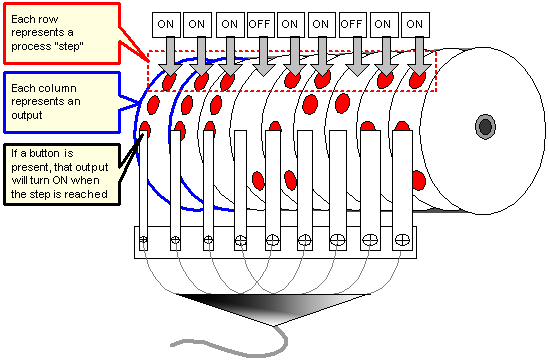
The Drum Sequencer utility simulates a mechanical drum sequencer as shown below. Drum instructions are best suited for repetitive processes that consist of a finite number of steps.
The utility is supported by the M91 OS 3.72 Build 01, Jazz OS 1.00 Build 2, and higher. Note that the M90 series does not support Drum.

The U90 Ladder Drum Configuration supports two 'drums'. For each drum, you can:
Define the number of steps on a 'drum''
Specify the Start step
Define the time duration of a step
Define the number of output columns
Link a coil (O or MB) to an output column.
In each step, determine the status of each coil.
Once you have defined a drum, you start it and stop by toggling the status of SB 150 – Drum1 Run/Stop or SB152 Drum2 Run/Stop.
You can configure and run two drums independently of each other. A drum configuration contains rows of output bits. Each row is a Sequence Step, which correspond to the 'process steps' on a drum.
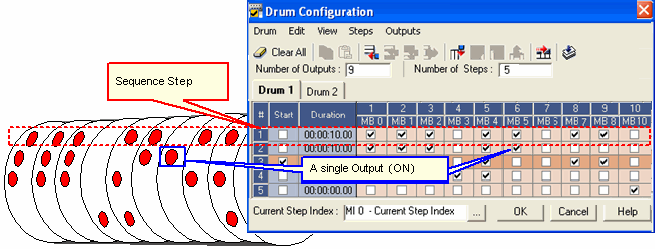
|
Name |
Description |
|
# |
This is the Step Index number. Use this together with the Go To Step SBs to progress to a particular step. |
|
Start |
When the Drum Sequencer starts, this is the first step in the sequence by default. |
|
Duration |
This is the amount of time the drum stays in the step before progressing to the next step. If you do not set a Time, the drum will remain in that step, unless you use Go to Step SBs to change the current step. |
|
This MI contains the Step Index number of the current drum process step. You write to this MI to determine the destination step when you turn on a Go to Step SB. |
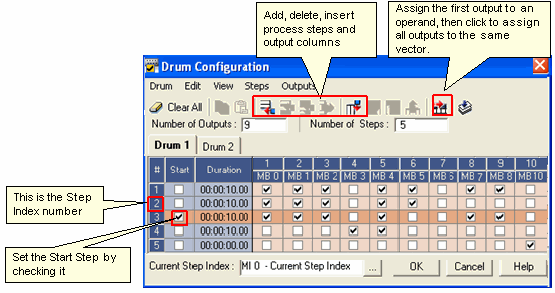
You can export either Drum 1 or Drum 2 via the Drum menu, and then import it into any U90 Ladder application.
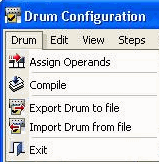
To start and stop a drum, toggle the status of the relevant SBs, either SB 150 – Drum1 Run/Stop or SB152 Drum2 Run/Stop. Note that these SBs are off by default. When a drum stops, it does not progress to the next step. The status of the drum's outputs is not affected.
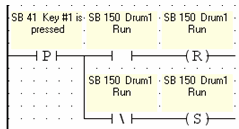
In order to restart a drum after power-up, or reset, you must turn on SBs 150 or 152.
At restart, if the drum was in the Stop state prior to power-up/reset, the drum starts at the Start Step.
If the drum was in the Run state, the drum restarts at the step in was in at power-up/reset. Note that the timer starts counting down from the full preset time, and not from the time that had already elapsed.
|
Note ♦ |
Program download
|
This is done in the Configuration. If you do not set a time, the drum will remain in that step, unless you use Go to Step SB. When the duration time set for the first step elapses, the drum progresses to the next step. When the last step in the drum is complete, the drum continues with the Start Step.
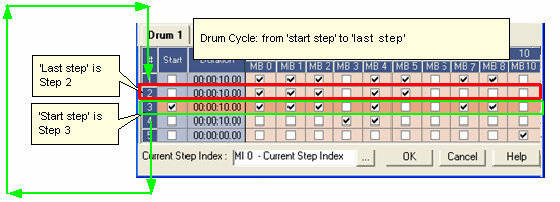
SBs 151 Drum1 Go to Step and 153 Drum2 Go to Step enable you to jump to another step at any time, even if the drum is in the middle of a different step:
Jump to the next step by turning on the appropriate SB for that drum
Jump to a specific step by storing a value into the MI you use for the Current Step Index in the Drum Configuration, and then turning on the appropriate SB in your Ladder application.

In order to mark the final step in the drum, use a step that includes an output that you dedicate to that purpose. You can then use the changing output status to drive any task.
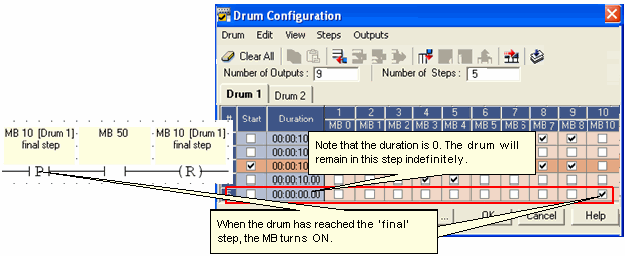
|
Note ♦ |
|